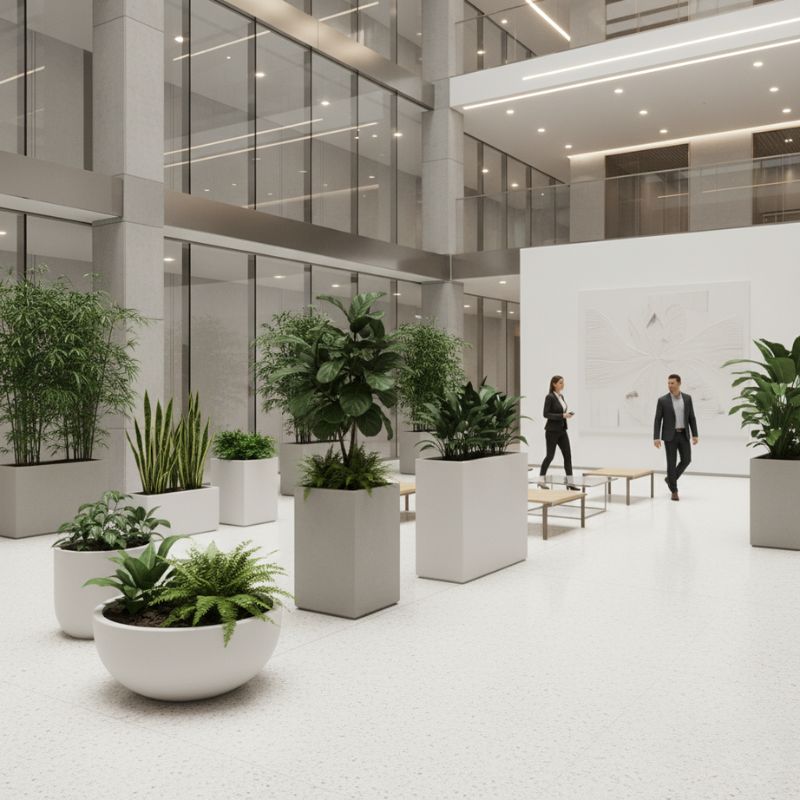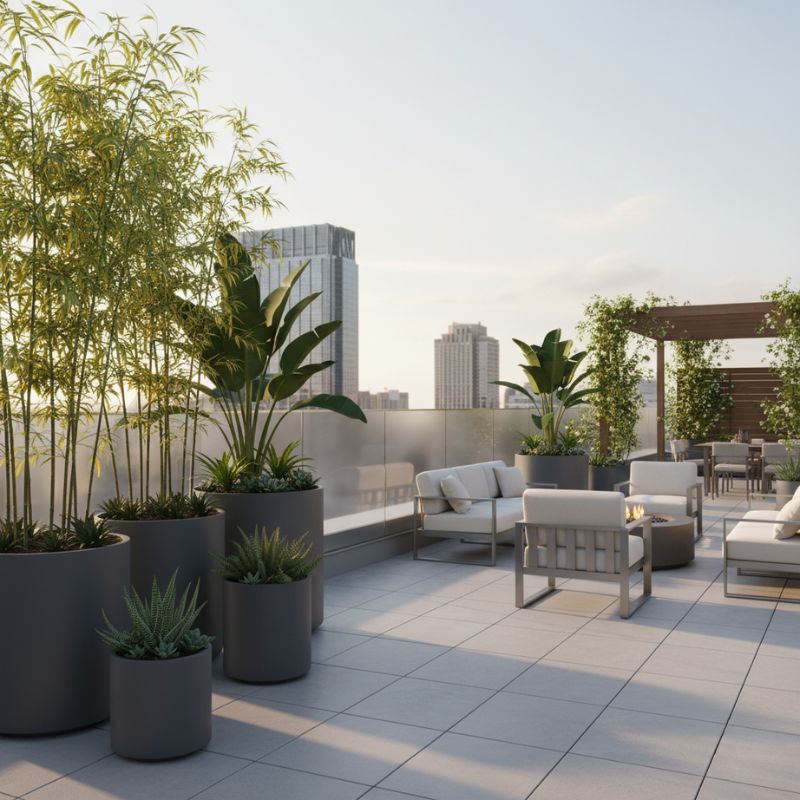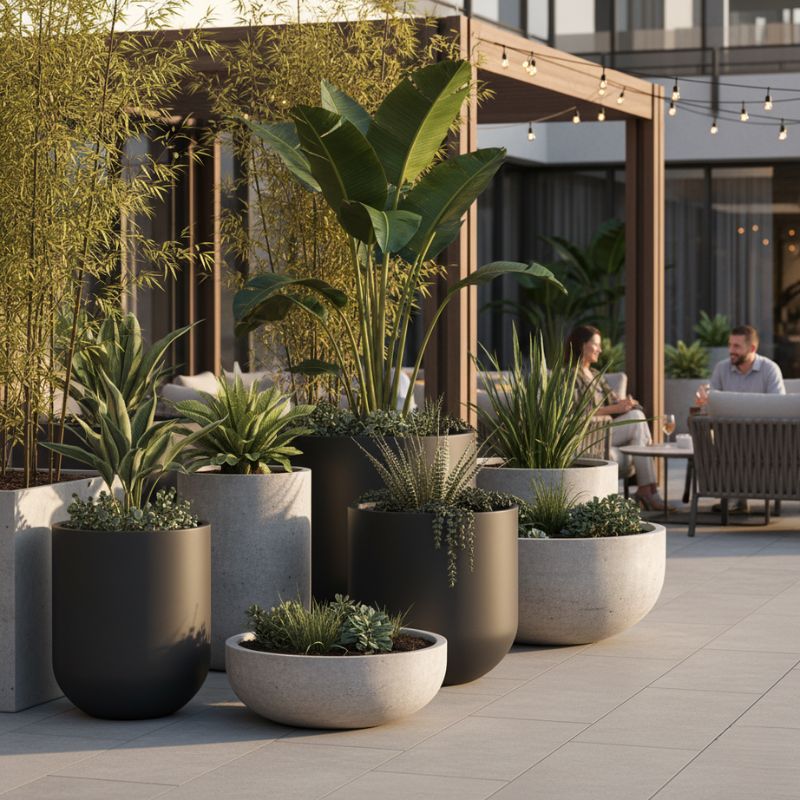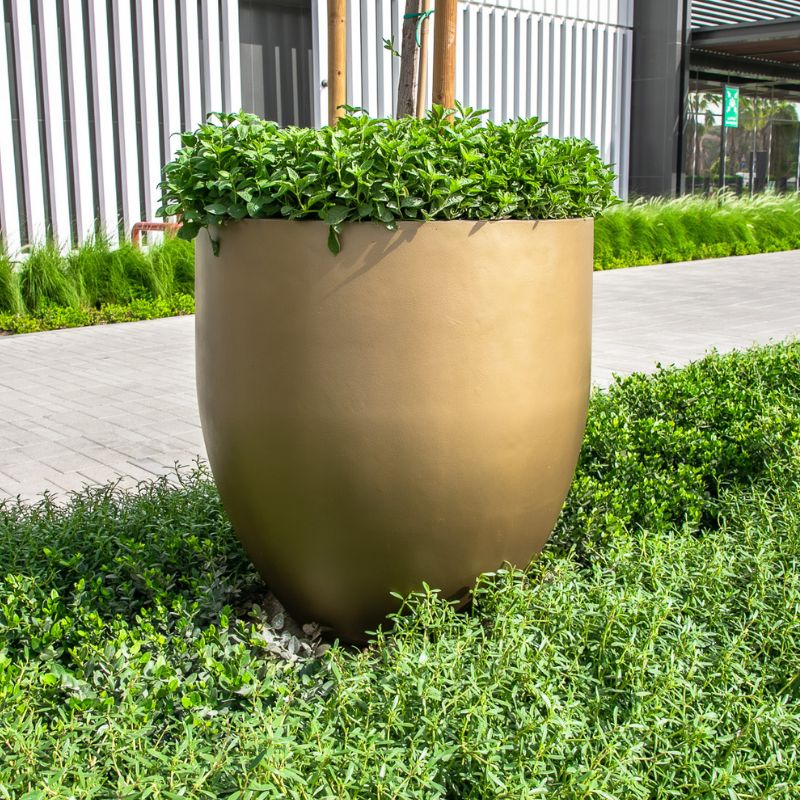
What Makes a Pot Project-Ready? A Checklist for Designers
When designing commercial spaces, whether it’s a hotel, rooftop garden, shopping promenade, or office atrium, the pot you choose does more than hold a plant. It becomes part of the spatial design language, influences plant health, and must withstand real-world use conditions. For project managers and design consultants, this blog offers a focused checklist to guide planter selection based on practical criteria that meet both design goals and on-site demands in the UAE.
1. Start with a material: fit for purpose
Each pot material offers unique strengths and limitations. Choosing the wrong one can affect installation, maintenance, and even safety.
- GRP (Glass-Reinforced Plastic) is widely preferred for its lightweight yet durable composition. It’s ideal for rooftop gardens, indoor atriums, and high-traffic zones where frequent movement or visual uniformity is key.
- GRC (Glass-Reinforced Concrete) suits large outdoor spaces, especially when anchoring trees or adding height-driven greenery. It holds weight well and resists wind stress.
- Ceramic or terracotta planters are best reserved for indoor or shaded settings. While they bring elegance, they’re heavier and more fragile.
Tip: Match the material with the location’s exposure to heat, wind, footfall and the plant type being housed.

2. check for effective drainage solutions
Drainage is non-negotiable. Poor drainage leads to root rot, plant stress and unnecessary replanting costs.
- Ensure every planter has adequate drainage holes.
- For indoor use, check whether the pot design supports hidden trays or integration with self-watering inserts.
- For commercial installations, confirm if the drainage system aligns with site irrigation plans.
If you’re specifying pots for balconies, terraces, or lobbies, it’s worth checking if the supplier offers customization on drainage.
3. weight, stability & placement consideration
Planter weight influences both logistics and safety. Rooftops, suspended walkways, and floors with load-bearing limits need lighter pots. That’s where GRP shines—it’s strong without being heavy.
At the same time, ensure the base is wide enough to support tall trees or top-heavy foliage, especially in outdoor zones prone to wind.
Ask yourself:
- Is this planter stable enough for its intended use?
- Will it shift or tip over in high-traffic areas?
4. Finish & texture- more than just looks
A pot’s finish affects maintenance, visual impact, and how it weathers over time.
- Matte finishes are ideal for hiding dust, fingerprints, and scuff marks—making them a go-to for resorts and high-traffic interiors.
- Textured exteriors offer a natural look and better blend with architectural materials like stone or wood.
- Satin or gloss finishes create statement pieces but may require more upkeep.
Choose finishes that support your design concept but also consider how easily they’ll clean and age under UAE weather conditions.
5. Weather & uv resistance
Look for:
- UV-stabilized coatings
- High heat tolerance
- Resistance to humidity and salt (especially for coastal projects)
GRP and GRC are both excellent options, provided they come with quality assurance from the manufacturer.


6. Design Integration & Custom Options
Your planter shouldn’t just fill a space it should enhance it. Especially for branded spaces like resorts or malls, consistency in color, shape, and scale is key.
Some questions worth asking:
- Can the supplier match specific RAL or NCS colors?
- Are custom sizes possible to fit architectural nooks or align with furniture?
Is bulk production with uniform finish available?
Final Thought
A “project-ready” pot is one that serves the plant, suits the space, and survives real use without creating surprises during installation or maintenance. This checklist can save valuable time during procurement and ensure that your planter selection aligns with both aesthetic and technical project needs.
If you’re managing a commercial fit-out, landscape rollout, or hospitality space, selecting the right pot early on can prevent costly redesigns down the line.

